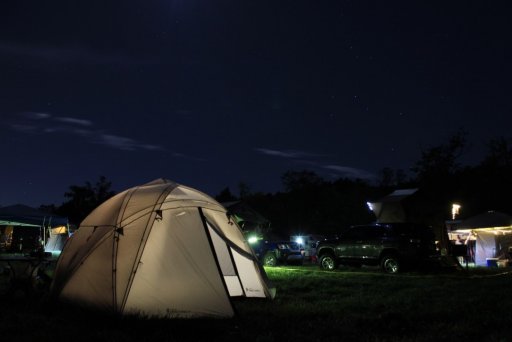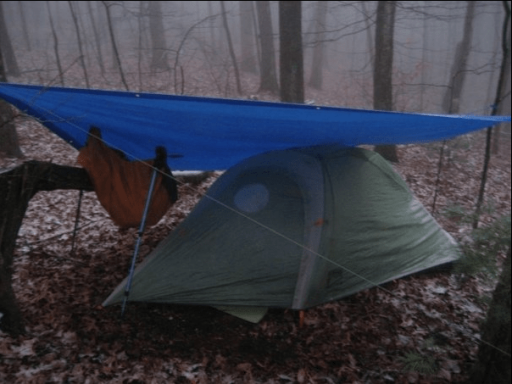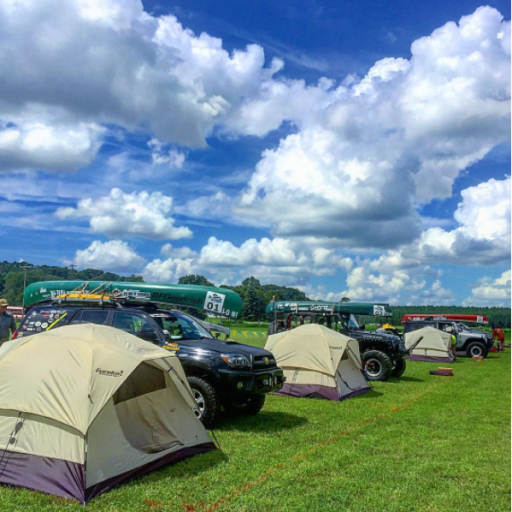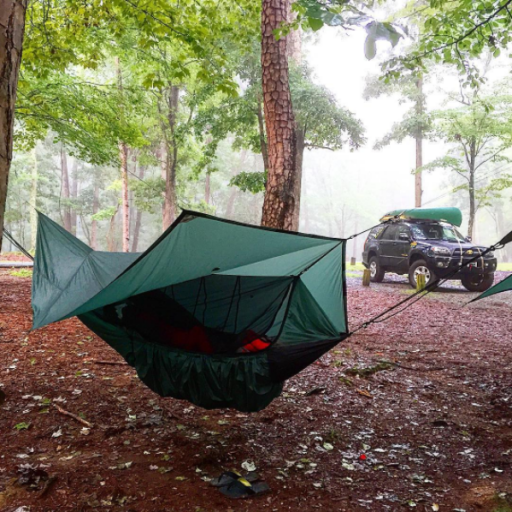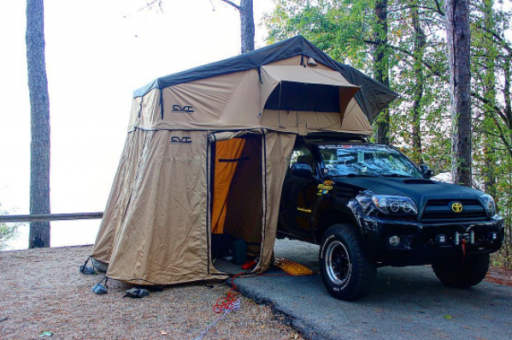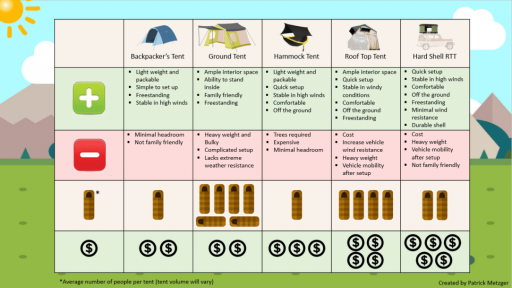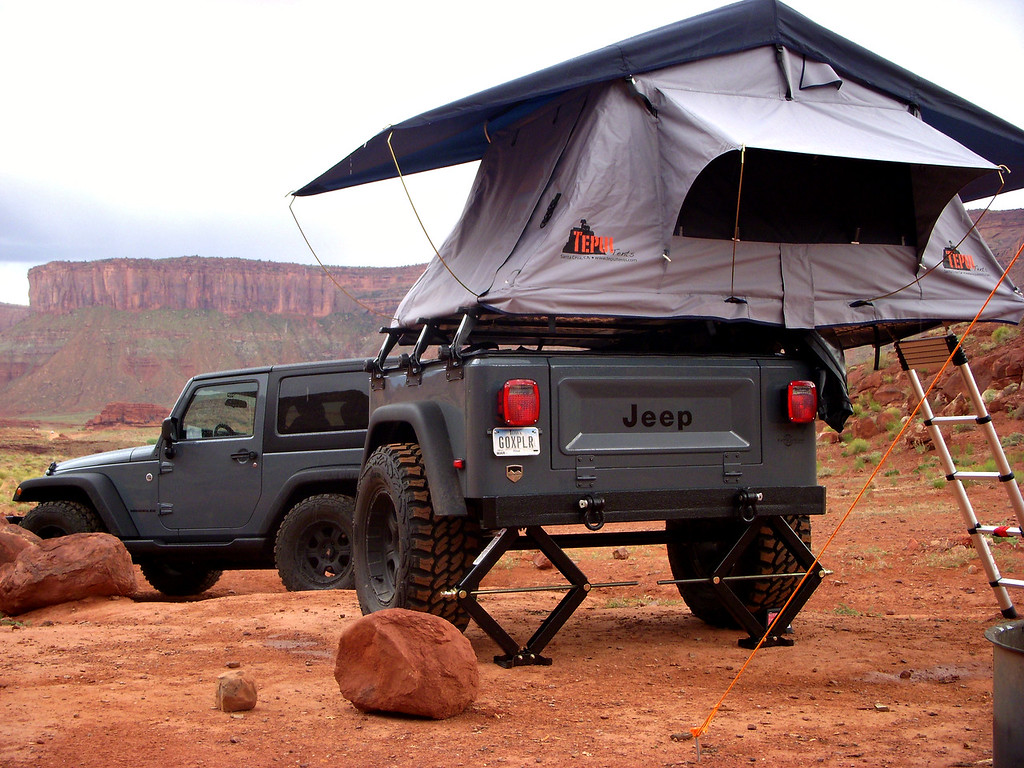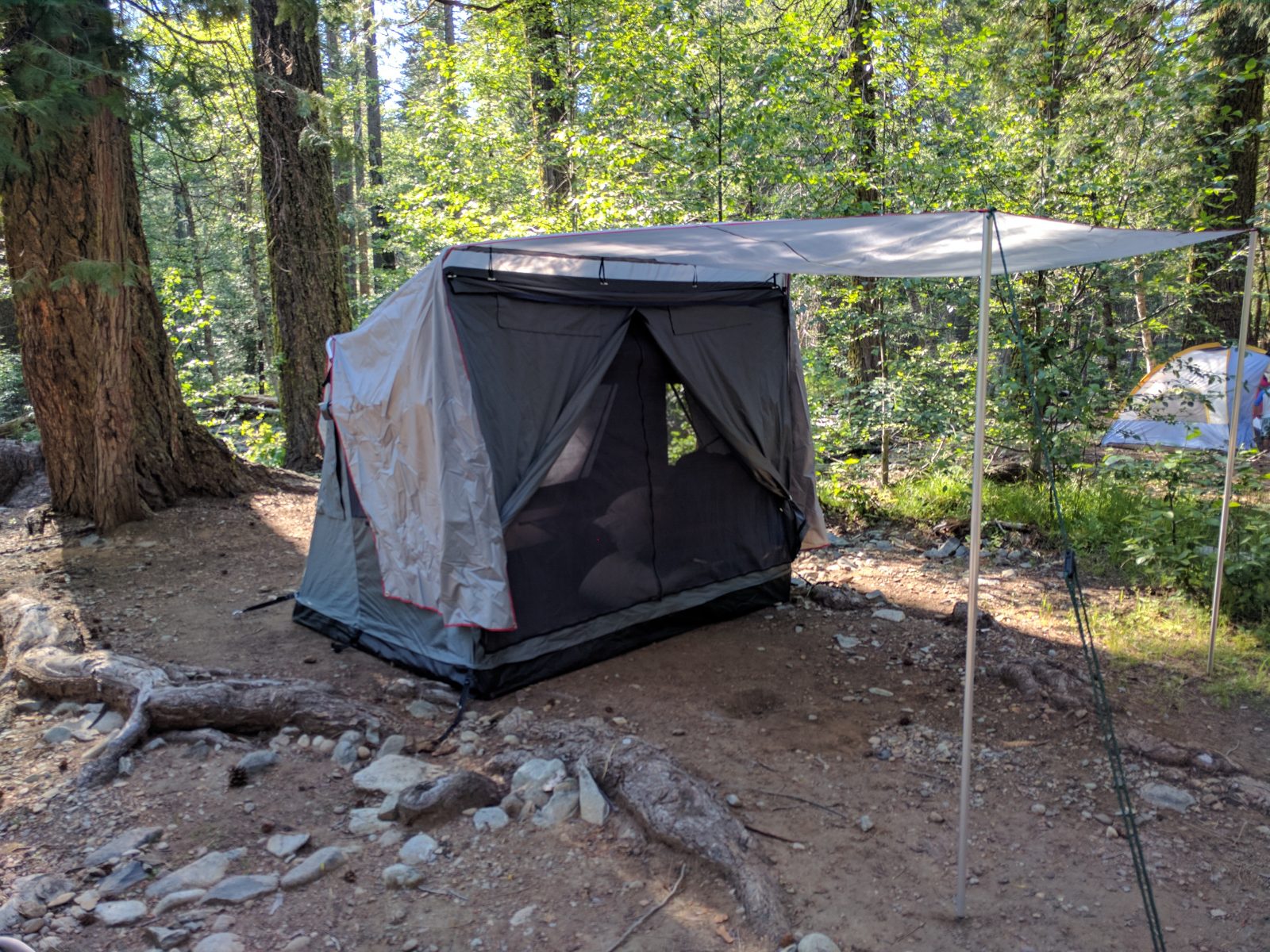You’re probably reading this because you either want to get more into self-reliant travel or you just want to validate that you’re taking everything into consideration before you make the most important purchase toward your traveling experience. I have worked my way through each of these tent phases based my needs in different times in my life. I am going to attempt to consolidate my experience into a list of pros and cons and things to consider for each of these types of tents.
Ground Tents are typically considered the most cost effective way to start your camping experience, but they do not have to be an uncomfortable or subpar experience. For the purpose of this write up, let’s break ground tents up into 2 categories.
The backpacker’s ground tent is created with the goal of being light weight, easy to set up and secure from the elements. This was the tent I used for the majority of the Georgia section of the AT (Appalachian Trail) and it was purchased from REI for a modest $80. This tent offered me enough space for my oversized sleeping bag, my inflatable mattress, and room to toss and turn at night. After you install the rain fly, you have a place to keep your pack in the vestibule where it is free from the direct elements. If you are expecting rain be sure to leave your pack in the rain cover to keep it off the ground. In the above pic I was expecting snow, so to make packing up a little easier I put the tarp over my tent. Since this tent only weighed about 3 lbs. and could pack up to the size of a Nalgene bottle, it was ideal for hiking on the AT.
The traditional ground tent has been sheltering people from the elements for hundreds of years, and with modern advances in textiles and fiberglass poles, it has only been getting more affordable, lighter, and more effective against the elements. The entering price point for a modest 4 person Coleman tent is about $60, but can range to about $1,000+ based on the functionality, size, and ease of use. This tent is good for families, or situations where you set up an extended base camp or may need to store gear for several days. These tents are fairly durable and should be packed away neatly, and be allowed to dry and cleaned out before long term storage. The above pic was from my competition in 36 hours of Uwharrie and is considered a 4 person tent, but with food and gear stored in the tent it only allows two adults to sleep comfortably. This type of tent is not ideal for backpacking because it would be too heavy and bulky to carry in your pack.
The hammock tent is another tent good option for solo trips. I have found 2 situations where a hammock tent is a perfect fit for my camping experience. I first used the hammock tent to complete a couple of sections of the AT and some overnight backpacking trips in North Georgia. I very quickly decided that it was a much better backpacking tent because it kept you off the ground, allowed for an under quilt for ultra-cold situations, and if hung correctly allowed for a better night sleep. I say “hung correctly” because there is a specific way you should hang the hammock for the best experience. If you try this option make sure you look it up so you are happy with you decision. If you are comfortable sleeping on your back I highly recommend this for solo camping situations. The second situation where this type of tent met my needs when during my filming of Red Clay Rally. I rode along in other people’s trucks during the trip and was very limited on space. The only thing to consider when using a hammock tent is “will there be enough trees to support your needs” (<- pun J ). In a pinch you could mount the tent to your bumper or roof rack if you could find at least one tree. This tent is great for people who want to hit challenging trails where clearance or top heaviness is a potential concern with a roof top tent but do not want to sleep on the ground.
Pro-Tip: You should still use an inflatable mattress when hammock camping because if offers a little more support and helps hold the tent open when entering and exiting.
If you are looking for the best sleeping experience in the wilderness, look no further. At first glance, the roof top tent may seem like too much work or very bulky for your travelling experience, but the reality is that most people do not use their roof for storage so the roof top tent takes up virtually zero usable space. The typical roof top tent also has room for blankets and pillows, and even a 1.5” memory foam mattress in my case. The tent takes about 5-10 minutes to setup and 10-12 minutes to take down when not using the annex. The nicest tents even have skylights and prewiring for USB devices and lighting. The annex offers a place to store auxiliary gear, or even a place to put a camp toilet so you don’t have to setup a privy. The opening price point for a good RTT is about $1000, but I have seen several pop up for less. When making an investment as large as this one, I would typically look for a company that has a good reputation, longevity in the US market, and great customer service.
Below is a time-lapse video I made of the setup.
Ultimately you have to make the best decision for you because it’s your money you are spending. If we sat down and had a beer, these would be the musing I would share, but these are just my opinions.
Do you have an opinion? Did I miss any other types of tents? Comment below with your experiences.
Ground Tents are typically considered the most cost effective way to start your camping experience, but they do not have to be an uncomfortable or subpar experience. For the purpose of this write up, let’s break ground tents up into 2 categories.
The backpacker’s ground tent is created with the goal of being light weight, easy to set up and secure from the elements. This was the tent I used for the majority of the Georgia section of the AT (Appalachian Trail) and it was purchased from REI for a modest $80. This tent offered me enough space for my oversized sleeping bag, my inflatable mattress, and room to toss and turn at night. After you install the rain fly, you have a place to keep your pack in the vestibule where it is free from the direct elements. If you are expecting rain be sure to leave your pack in the rain cover to keep it off the ground. In the above pic I was expecting snow, so to make packing up a little easier I put the tarp over my tent. Since this tent only weighed about 3 lbs. and could pack up to the size of a Nalgene bottle, it was ideal for hiking on the AT.
The traditional ground tent has been sheltering people from the elements for hundreds of years, and with modern advances in textiles and fiberglass poles, it has only been getting more affordable, lighter, and more effective against the elements. The entering price point for a modest 4 person Coleman tent is about $60, but can range to about $1,000+ based on the functionality, size, and ease of use. This tent is good for families, or situations where you set up an extended base camp or may need to store gear for several days. These tents are fairly durable and should be packed away neatly, and be allowed to dry and cleaned out before long term storage. The above pic was from my competition in 36 hours of Uwharrie and is considered a 4 person tent, but with food and gear stored in the tent it only allows two adults to sleep comfortably. This type of tent is not ideal for backpacking because it would be too heavy and bulky to carry in your pack.
The hammock tent is another tent good option for solo trips. I have found 2 situations where a hammock tent is a perfect fit for my camping experience. I first used the hammock tent to complete a couple of sections of the AT and some overnight backpacking trips in North Georgia. I very quickly decided that it was a much better backpacking tent because it kept you off the ground, allowed for an under quilt for ultra-cold situations, and if hung correctly allowed for a better night sleep. I say “hung correctly” because there is a specific way you should hang the hammock for the best experience. If you try this option make sure you look it up so you are happy with you decision. If you are comfortable sleeping on your back I highly recommend this for solo camping situations. The second situation where this type of tent met my needs when during my filming of Red Clay Rally. I rode along in other people’s trucks during the trip and was very limited on space. The only thing to consider when using a hammock tent is “will there be enough trees to support your needs” (<- pun J ). In a pinch you could mount the tent to your bumper or roof rack if you could find at least one tree. This tent is great for people who want to hit challenging trails where clearance or top heaviness is a potential concern with a roof top tent but do not want to sleep on the ground.
Pro-Tip: You should still use an inflatable mattress when hammock camping because if offers a little more support and helps hold the tent open when entering and exiting.
If you are looking for the best sleeping experience in the wilderness, look no further. At first glance, the roof top tent may seem like too much work or very bulky for your travelling experience, but the reality is that most people do not use their roof for storage so the roof top tent takes up virtually zero usable space. The typical roof top tent also has room for blankets and pillows, and even a 1.5” memory foam mattress in my case. The tent takes about 5-10 minutes to setup and 10-12 minutes to take down when not using the annex. The nicest tents even have skylights and prewiring for USB devices and lighting. The annex offers a place to store auxiliary gear, or even a place to put a camp toilet so you don’t have to setup a privy. The opening price point for a good RTT is about $1000, but I have seen several pop up for less. When making an investment as large as this one, I would typically look for a company that has a good reputation, longevity in the US market, and great customer service.
Below is a time-lapse video I made of the setup.
Ultimately you have to make the best decision for you because it’s your money you are spending. If we sat down and had a beer, these would be the musing I would share, but these are just my opinions.
Do you have an opinion? Did I miss any other types of tents? Comment below with your experiences.


